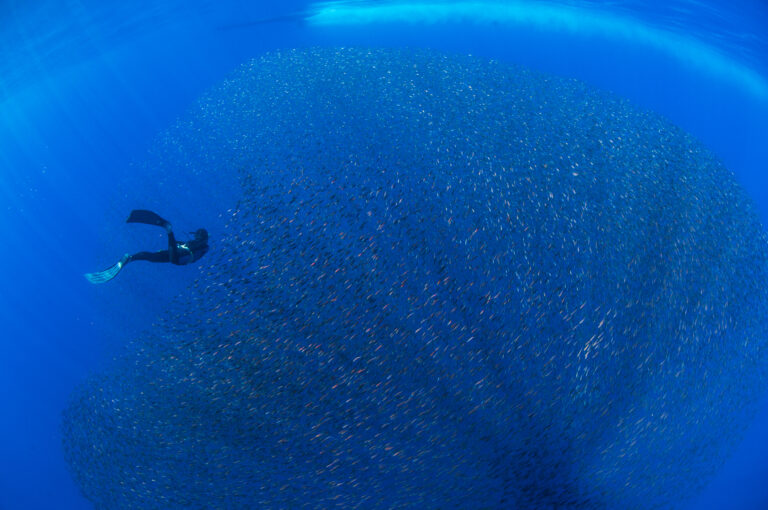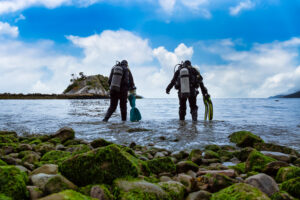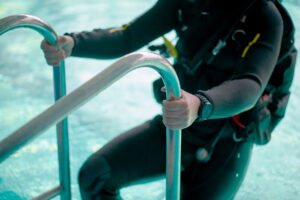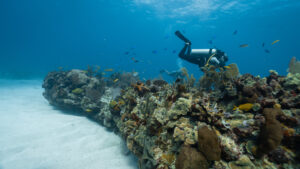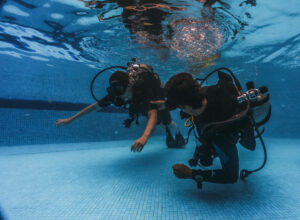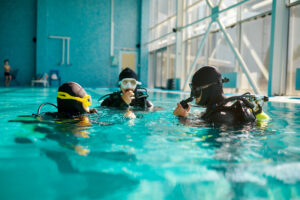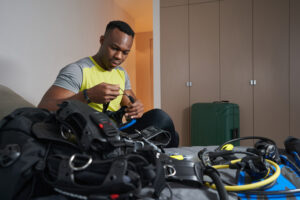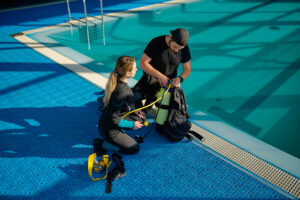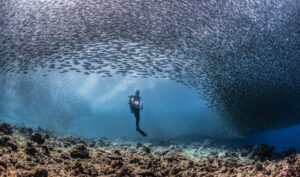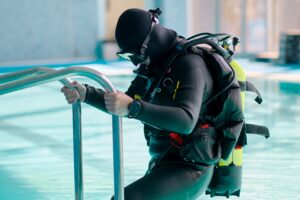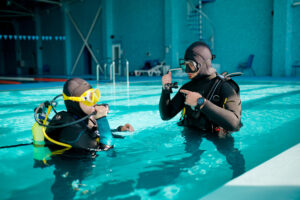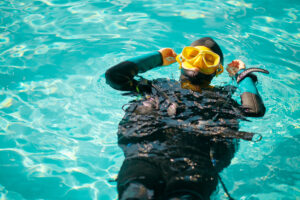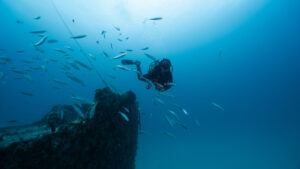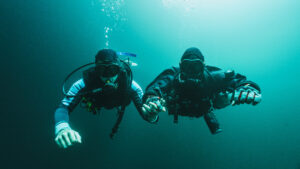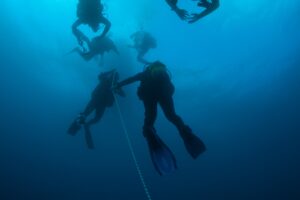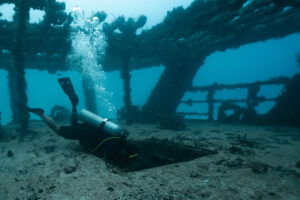What is Visual Inspection?
Visual inspection in scuba diving refers to the systematic examination of diving equipment to ensure its safety and functionality. This process is vital in identifying potential issues that could compromise a diver’s safety. Given the high-risk nature of scuba diving, regular visual inspections are crucial for preventing equipment failure that can lead to serious accidents. This article delves into the history, purpose, techniques, common issues, and standards associated with visual inspections in the diving industry.
Historical Development
The practice of visual inspection in scuba diving has evolved significantly over the years. In the early days of diving, equipment checks were rudimentary, relying heavily on the diver’s experience and intuition. As the sport gained popularity and technology advanced, more systematic methods were developed to ensure the reliability and safety of diving gear.
In the mid-20th century, the introduction of standardized equipment brought about the need for more formal inspection procedures. Diving cylinders, for instance, began to be made from materials such as steel and aluminum, which required specific maintenance routines. Organizations like the Professional Association of Diving Instructors (PADI) and the National Association of Underwater Instructors (NAUI) started to emphasize the importance of regular equipment checks in their training programs.
By the late 20th century, visual inspection protocols had become more sophisticated. Technological advancements allowed for more detailed inspections, including the use of tools like borescopes to examine the interior of cylinders. Regulatory bodies established guidelines to ensure that all diving equipment met safety standards. These developments marked a significant shift from the informal practices of the past to the highly regulated procedures we see today.
Purpose and Significance
The primary purpose of visual inspections in scuba diving is to ensure the safety and functionality of equipment. This process helps to identify any signs of wear, damage, or corrosion that could compromise the integrity of the gear. By detecting these issues early, divers can avoid potentially dangerous situations underwater.
Visual inspections are particularly important for high-pressure components like diving cylinders. These cylinders store compressed air or other breathing gases, and any compromise in their integrity can lead to catastrophic failures. Regular inspections help to ensure that these cylinders are free from cracks, corrosion, and other defects that could lead to leaks or explosions.
Beyond safety, visual inspections also play a crucial role in maintaining the longevity of diving equipment. Regular checks allow for timely maintenance and repairs, extending the life of the gear. This not only ensures a safer diving experience but also reduces the long-term costs associated with equipment replacement.
Types of Equipment Inspected
Cylinders
Diving cylinders are among the most critical pieces of equipment subjected to visual inspections. These inspections involve checking for external damage, such as dents or scratches, and internal issues like corrosion or cracks. The cylinder valve, which regulates the flow of air, is also examined to ensure it is functioning correctly. Regular inspections help to prevent failures that could result in air leaks or explosions.
Regulators
Regulators, which control the pressure of the air delivered to the diver, are another key focus of visual inspections. Inspectors check for signs of wear and tear, such as cracks in the hoses or corrosion on the metal components. The first and second stages of the regulator, which reduce the high-pressure air from the cylinder to a breathable level, are carefully examined to ensure they are operating smoothly.
Buoyancy Control Devices (BCDs)
Buoyancy Control Devices are essential for maintaining neutral buoyancy underwater. Visual inspections of BCDs involve checking the bladder for leaks, inspecting the inflator and deflator mechanisms, and ensuring that all straps and buckles are in good condition. Any signs of damage or wear can affect the BCD’s performance, making these inspections vital for a safe and enjoyable diving experience.
Additional Accessories
Other diving accessories, such as masks, fins, and snorkels, also undergo visual inspections. Masks are checked for cracks in the lenses and tears in the silicone skirt, which can cause leaks. Fins are inspected for damage to the blades and straps, while snorkels are checked for blockages and signs of wear. These inspections, though less critical than those for high-pressure components, are still important for ensuring a comfortable and safe dive.
Visual Inspection Techniques
External Inspection
External inspection is the first step in the visual inspection process. It involves a thorough examination of the outer surfaces of the equipment for any signs of damage or wear. For diving cylinders, this includes checking the exterior for dents, scratches, and corrosion. Regulators and BCDs are inspected for cracks, corrosion, and any visible signs of wear. This step is crucial for identifying issues that could compromise the equipment’s integrity.
Internal Inspection
Internal inspection is particularly important for diving cylinders, as it involves examining the inside of the cylinder for signs of corrosion, cracks, or other defects. This is typically done using specialized tools such as borescopes, which allow inspectors to see inside the cylinder without dismantling it. Internal inspections help to identify issues that are not visible from the outside but could still pose a significant risk to the diver.
Specialized Tools
Several specialized tools are used during visual inspections to ensure a thorough examination. Flashlights are commonly used to illuminate hard-to-see areas, while magnifying glasses help inspectors to identify small cracks or signs of corrosion. Borescopes, which are flexible tubes with cameras on the end, allow for detailed internal inspections of cylinders and other closed systems. These tools enhance the effectiveness of visual inspections, ensuring that even the smallest defects are identified and addressed.
Common Issues Identified During Visual Inspections
Corrosion and Rust
Corrosion and rust are common issues identified during visual inspections, particularly for metal components like diving cylinders and regulators. Corrosion can weaken the structure of the equipment, leading to potential failures. Inspectors look for signs of rust and corrosion both externally and internally, as these can indicate exposure to moisture and other corrosive elements. Addressing corrosion early helps to prevent more serious damage and extends the life of the equipment.
Cracks and Deformations
Cracks and deformations are critical issues that can compromise the safety of diving equipment. These defects are often caused by physical impacts or stress over time. During visual inspections, inspectors look for any signs of cracking or deformation, particularly in high-stress areas like the neck of the cylinder or the hoses of the regulator. Identifying and addressing these issues is crucial for preventing equipment failure during a dive.
Contaminants and Residues
Contaminants and residues, such as oil, salt, and dirt, can accumulate on diving equipment over time. These substances can affect the performance of the gear and pose a safety risk. Visual inspections involve checking for any signs of contamination and ensuring that the equipment is clean and free from residues. This step is especially important for regulators and BCDs, as contaminants can interfere with their operation.
Guidelines and Standards
The diving industry is governed by a set of guidelines and standards to ensure the safety and reliability of equipment. Organizations such as the Compressed Gas Association (CGA) and the International Organization for Standardization (ISO) provide detailed guidelines for the visual inspection of diving cylinders. These guidelines specify the frequency of inspections, the procedures to be followed, and the criteria for passing or failing an inspection.
In addition to these guidelines, many countries have their own national standards for the inspection of diving equipment. These standards are often based on the recommendations of international organizations but may include additional requirements specific to the local diving environment. For instance, the United States Department of Transportation (DOT) has specific regulations for the inspection of high-pressure cylinders used in diving.
Certification and training requirements for individuals conducting visual inspections are also outlined in these standards. Inspectors must undergo specialized training to ensure they are qualified to identify and address potential issues with diving equipment. This training typically includes both theoretical instruction and practical experience, ensuring that inspectors are well-equipped to perform thorough and accurate inspections.
Case Studies
Several case studies highlight the importance of visual inspections in preventing diving accidents. One notable example involves a diver who narrowly avoided a serious accident due to a timely visual inspection. The diver’s cylinder was found to have a small crack during a routine inspection, which could have led to a catastrophic failure underwater. The early detection of this issue allowed for the cylinder to be repaired or replaced, ensuring the diver’s safety.
Another case study involves a diving school that implemented a rigorous visual inspection program for all its equipment. This program resulted in a significant decrease in equipment-related incidents, highlighting the effectiveness of regular inspections in maintaining safety standards. These case studies underscore the critical role that visual inspections play in ensuring the safety and reliability of diving equipment.
Key Takeaways
Visual inspections are a fundamental aspect of maintaining safety and functionality in scuba diving. These inspections help to identify and address potential issues with diving equipment, preventing accidents and ensuring a safe diving experience. Regular inspections, guided by established standards and conducted by trained professionals, are essential for the longevity and reliability of diving gear. Emphasizing the importance of visual inspections can significantly enhance diver safety and contribute to the overall enjoyment of the sport.

